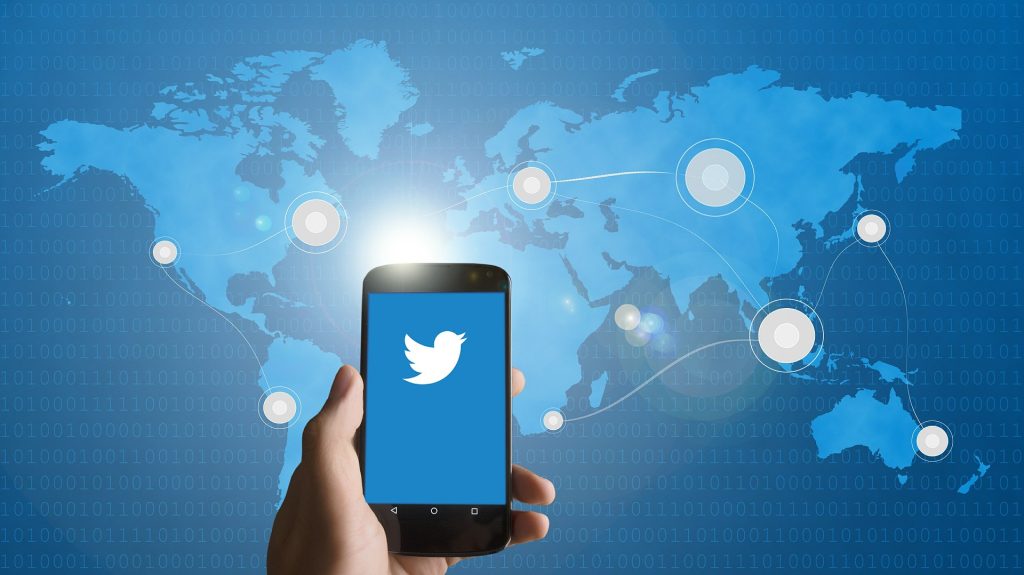Twitter, a social media platform that allows users to share their thoughts and opinions in short messages known as tweets, has become an integral part of our daily lives. It has transformed the way we consume and share information, connect with others, and participate in public discourse. With over 450 million monthly active users, Twitter has emerged as a powerful tool for communication, activism, and social change.
From breaking news to celebrity gossip, from political debates to social movements, Twitter is the go-to platform for staying informed and engaged with the world around us. It has given a voice to the voiceless, allowing marginalized communities to speak out and share their stories. It has also challenged traditional media outlets by providing a platform for citizen journalism and alternative perspectives.
However, despite its immense popularity and impact, Twitter is not without its challenges. The platform has faced criticism for its handling of hate speech, online harassment, and fake news. It has also struggled with issues related to user engagement, revenue generation, and competition from other social media platforms. According to ExpressVPN, after Elon Musk took over the company, the number of employees fell from 7,500 to 1,800, less than the platform had in 2012. In this article, we will explore Twitter’s current state, its challenges, and the opportunities it holds for the future.
The Twitter Current State: Usage, User Base, and Revenue
Twitter’s user base has been relatively stable over the past few years, with around 450 million monthly active users as of 2023. However, the platform has faced challenges in terms of user engagement, as the average number of tweets per user has been declining. In addition, Twitter’s revenue growth has been slower than that of its competitors, with the company reporting $6.1 billion in revenue for 2023.
In terms of usage, Twitter has become an essential source of news and information, particularly during breaking news events. The platform has also been a catalyst for social and political movements, with hashtags like #BlackLivesMatter and #MeToo gaining widespread attention and support. However, Twitter has also been criticized for its role in spreading fake news and misinformation, particularly during elections and other politically charged events.
In terms of its user base, Twitter has a diverse demographic, with a significant portion of users under the age of 30. The platform has a global reach, with a presence in over 40 languages. However, Twitter has faced criticism for its lack of diversity and inclusivity, particularly in terms of gender and racial representation among its leadership and employees.
Twitter’s revenue comes primarily from advertising, with the majority of its advertisers coming from the United States. The platform has also explored alternative revenue streams, such as paid subscription services and e-commerce partnerships, but these have yet to gain significant traction.
Challenges Faced by Twitter: Tackling Fake News, Hate Speech, and Online Harassment
Twitter has faced significant challenges related to the spread of fake news, hate speech, and online harassment on its platform. These issues have had a negative impact on user experience and engagement, as well as on the company’s reputation.
In response, Twitter has taken steps to tackle these challenges, including implementing new policies and features to detect and remove fake news and hate speech. The company has also developed tools to allow users to report instances of online harassment and has committed to improving its response times to these reports.
However, Twitter’s efforts to combat these issues have not been without criticism. Some have argued that the platform’s policies are inconsistent and poorly enforced, leading to a lack of accountability for those who spread misinformation or engage in online harassment. Others have raised concerns about free speech and censorship, arguing that Twitter’s efforts to remove certain types of content may infringe on users’ rights.
Twitter also faces challenges related to the spread of misinformation during major news events, particularly during elections. The platform has been criticized for not doing enough to prevent the spread of false information and has faced pressure to take a more proactive role in fact-checking and debunking false claims.
Overall, tackling fake news, hate speech, and online harassment is a complex challenge for Twitter, and the company will need to continue to adapt and refine its policies and strategies to effectively address these issues while balancing concerns related to free speech and user privacy.
The Role of Twitter in Politics: Case Studies and Analysis
Twitter has become an integral part of political communication and engagement, with politicians, political organizations, and citizens using the platform to share their views, mobilize supporters, and influence public opinion.
Twitter has played a significant role in political events and movements around the world. For example, during the Arab Spring, Twitter was used as a tool for organizing protests and disseminating information, while during the 2016 U.S. presidential election, Twitter was a key platform for candidates to communicate with voters and for citizens to engage in political discourse.
In recent years, Twitter has faced criticism for its role in the spread of political misinformation and propaganda, particularly during elections. The platform has been accused of failing to effectively monitor and remove false information, leading to concerns about its impact on democratic processes.
Despite these challenges, Twitter continues to play an important role in shaping political discourse and mobilizing citizens. Case studies and analysis of Twitter’s impact on politics have shown that the platform can be an effective tool for increasing political engagement, promoting transparency and accountability, and amplifying underrepresented voices.
However, it is important to recognize that the impact of Twitter on politics is not uniformly positive. The platform can also be used to spread hateful or divisive messages, and its algorithms may reinforce existing biases and echo chambers. As such, it is essential to continually evaluate and refine the role of Twitter in political communication to ensure that it is serving the interests of democratic values and principles.
Twitter’s Business Model: Monetization Strategies and Future Prospects
Twitter’s primary revenue source is advertising, with the majority of its advertisers coming from the United States. The company generates revenue through various advertising formats, including promoted tweets, promoted accounts, and promoted trends.
In recent years, Twitter has also explored alternative revenue streams, such as paid subscription services and e-commerce partnerships. For example, the company has launched a subscription-based service called Twitter Blue, which provides users with additional features such as undoing tweets and a dedicated customer support team. Twitter has also partnered with e-commerce companies to enable users to make purchases directly from tweets.
Twitter’s monetization strategies have had mixed success. While advertising revenue has been the primary driver of the company’s growth, its revenue growth has been slower than that of its competitors, such as Facebook and Google. The company has also faced challenges in diversifying its revenue streams, with some of its new initiatives, such as paid subscription services, struggling to gain traction.
Looking to the future, Twitter has identified several potential areas for growth, including expanding its advertising offerings, increasing its focus on e-commerce partnerships, and exploring new opportunities in areas such as audio and video content. The company has also expressed interest in expanding its presence in emerging markets, where it sees significant growth potential.
Overall, Twitter’s business model is heavily reliant on advertising revenue, and the company will need to continue to explore new revenue streams and strategies to maintain its growth and relevance in a rapidly evolving digital landscape.
Twitter’s Response to Challenges: New Policies and Features
Twitter has responded to the challenges it faces by implementing new policies and features to address issues such as fake news, hate speech, and online harassment. Some of the key policies and features the company has implemented include:
- Misinformation policies: Twitter has implemented policies to identify and remove misinformation, such as labeling tweets that contain false or misleading information and removing tweets that violate the company’s policies. The company has also partnered with third-party fact-checking organizations to help identify and label false information.
- Hate speech policies: Twitter has implemented policies to identify and remove hate speech, including tweets that promote violence or target individuals based on their race, gender, or other protected characteristics. The company has also developed tools to allow users to report instances of hate speech and has committed to improving its response times to these reports.
- Anti-harassment policies: Twitter has implemented policies to address online harassment, including developing tools to allow users to report instances of harassment and implementing policies to address abusive behavior. The company has also committed to improving its response times to reports of harassment.
- Algorithmic changes: Twitter has made changes to its algorithm to reduce the spread of misinformation and hate speech on its platform. For example, the company has implemented changes to its timeline algorithm to reduce the visibility of tweets that contain false or misleading information.
- Transparency reports: Twitter has published transparency reports to provide users with more information about the company’s policies and practices related to content moderation and user privacy. These reports provide insights into the volume and types of content removed by Twitter, as well as information about government requests for user data.
Overall, Twitter’s response to the challenges it faces has been to implement new policies and features to address issues such as fake news, hate speech, and online harassment. While these efforts have been met with some criticism, they demonstrate the company’s commitment to improving the user experience on its platform and addressing important issues related to online safety and democratic discourse.
Opportunities for Twitter: New Markets and Emerging Technologies
While Twitter faces several challenges in its current state, there are also significant opportunities for the company to explore new markets and emerging technologies. Some of these opportunities include:
- Emerging markets: Twitter has significant potential to expand its user base in emerging markets, where internet adoption is growing rapidly. The company has already established a presence in many of these markets, but there is still room for growth, particularly in countries such as India and Indonesia.
- Audio and video content: Twitter has started to explore opportunities in audio and video content, such as through the launch of Spaces, a feature that allows users to participate in live audio conversations. The company has also been experimenting with video content, including through partnerships with sports leagues and other media organizations.
- E-commerce: Twitter has the potential to become a significant player in the e-commerce space, particularly through partnerships with retailers and brands. The company has already experimented with e-commerce features such as “buy now” buttons, and there is significant potential to expand these offerings.
- Artificial intelligence: Twitter can leverage artificial intelligence (AI) to improve its content moderation efforts, increase user engagement, and personalize the user experience. For example, the company could use AI to recommend relevant content to users or to detect and remove harmful content more quickly.
- Blockchain technology: Twitter could explore the use of blockchain technology to improve the security and transparency of its platform. For example, the company could use blockchain to verify user identities or to create more secure payment systems.
Overall, Twitter has many opportunities to explore new markets and emerging technologies, and the company will need to continue to innovate and evolve to remain relevant and competitive in the rapidly changing digital landscape.
Conclusion: The Future of Twitter and its Role in Shaping the Digital Landscape
In conclusion, Twitter remains an important player in the digital landscape, with a significant impact on politics, culture, and society. The platform faces significant challenges related to fake news, hate speech, and online harassment, but the company has demonstrated a commitment to addressing these issues through new policies and features.
Looking ahead, Twitter has significant opportunities to explore new markets and emerging technologies, such as e-commerce, artificial intelligence, and blockchain. By continuing to innovate and evolve, Twitter can remain a relevant and competitive player in the digital landscape and continue to shape the way we communicate and engage with each other online.
Ultimately, the future of Twitter will depend on its ability to adapt to changing user needs and behaviors, respond to emerging trends and technologies, and maintain its role as a platform for free expression and democratic discourse. As the digital landscape continues to evolve, Twitter’s success will depend on its ability to balance these competing priorities while remaining true to its core values and mis





